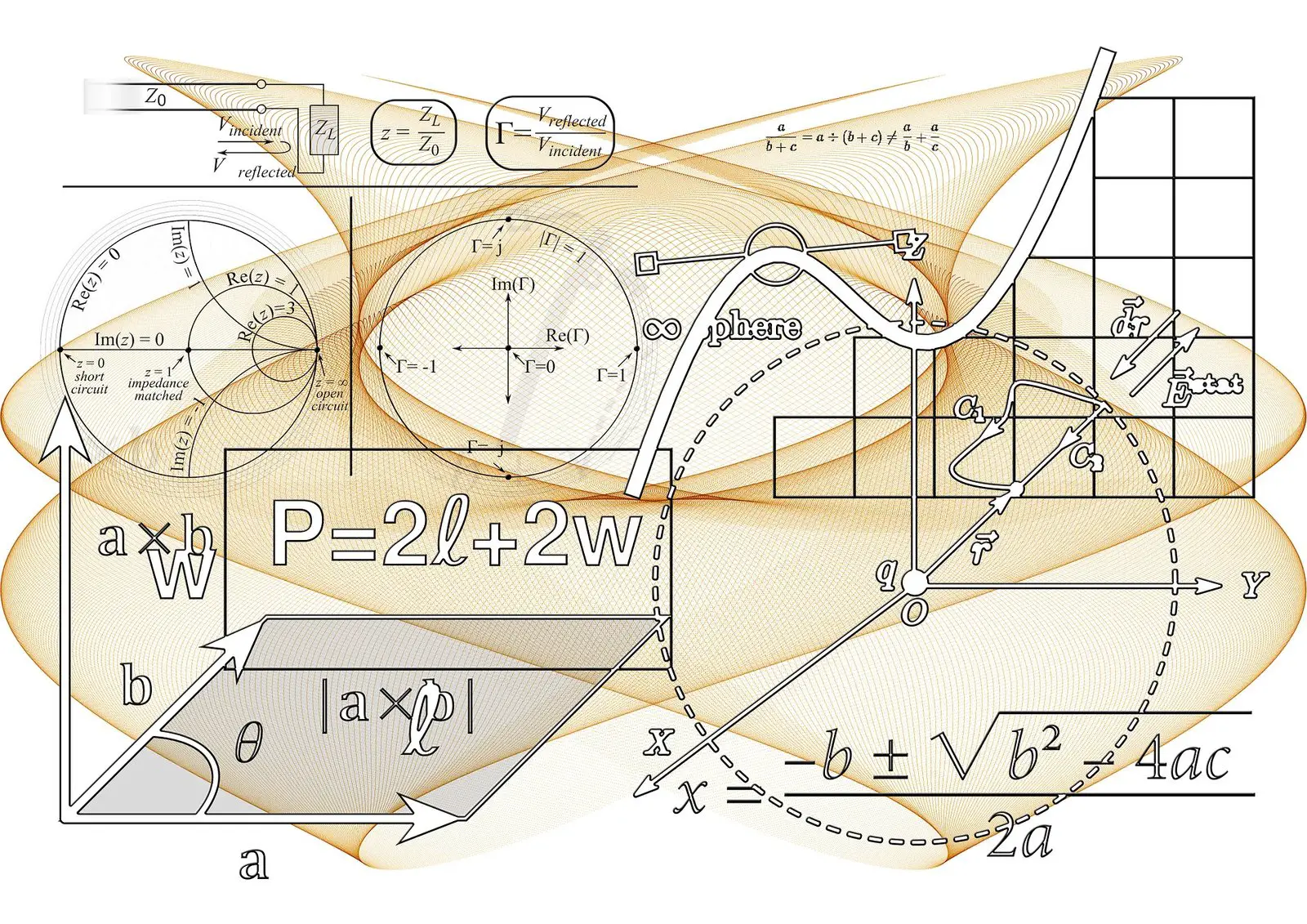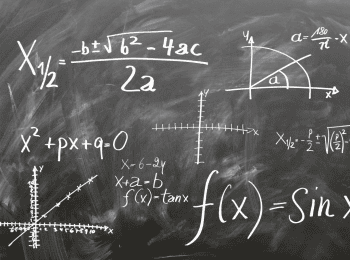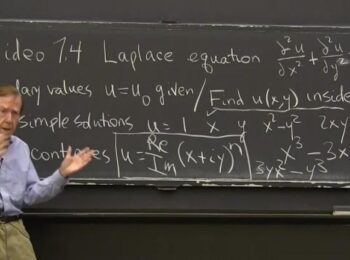Figuring out the length of an arc on a graph works out differently than it would if you were trying to find the length of a segment of a circle. Where the length of a segment of a circle can be figured out with some simple knowledge of geometry (or trigonometry), finding the arc length of a function is a little more complicated. You need to use calculus for that.
Finding the length of an arc works almost the same way as finding the length between line segments. In a way, you could argue that’s what you’re doing, except taken to an infinitely precise scale because the resolution of the curve is infinite as far as you can tell. There are no jagged edges or line segments.
Using Line Segments to Approximate Arc Length
To start, assume you have a given function with no interruptions and uniform smoothness. To get a basic idea of how long the arc was, you would start by separating the function into line segments placed at equal values of x. For example, you might plot the arc segments at x = 2, x = 4, x = 6, and so on.
You then use the Pythagorean Theorem to calculate the distances between the two points. However, you’re connecting two points directly rather than following a curve. This means you may be missing length or some extra length was added if the section of the graph happens to be a concave curve. What do you do?
You could take more sections by placing the line segment points at x =1, x =2, x=4 and so on. This would more closely approximate the curve of the graph. However, it still wouldn’t completely match. It doesn’t matter how small you make the sections: you cannot exactly match the section length with normal math.
This is where the calculus comes into play. You have to take derivatives and make use of integral functions to get use the arc length formula in calculus. We’ll give you a refresher of the definitions of derivatives and integrals.
What is a Derivative?
The derivative of any function is nothing more than the slope. There are several rules and common derivative functions that you can follow based on the function. For example, if you have a constant, such as x = 6, the derivative is 0 because there is no slope. For a function f(x) – ax where a is the slope, the derivative is the variable a.
If you have x2, the derivative with respect to x is 2x. In other words, at any given point for x on the function, as the limit approaches zero for a given value of delta-x, its derivative will be 2x.
These are just a few examples of using a derivative, and you’ll need to know or have access to them when figuring out arc lengths.
Integrals
An integral is one of the two fundamental operations in calculus, the other being differentiation. When we were talking about line segments as portions of the arc length, those are a crude form of differentiation. An integral is the act of taking discrete segments and combining them into one. As with derivatives, integrals have their own rules and basic functions.
Common Rules for Integration
The integral of ax dx, where dx is simply another way of saying ‘as delta-x approaches zero’, is ax + C, where C is the constant of integration. You don’t necessarily need to know the constant of integration, because it can be any number when you’re dealing with an indefinite integral.
An indefinite integral does not set upper or lower bounds for x. In practical uses, you aren’t going to see a lot of functions that have negative values for x or y, so you’ll just be taking the area under the curve in the positive x-y quadrant.
When you’re trying to find the arc length formula, you’ll need to use definite integrals. A definite integral sets boundaries on x. To find a definite integral, i.e., the area under a curve, you find the integral using the larger value of x, then the smaller value of x, and take the difference of the two numbers.
Arc Length Formula
The formula for arc length is ∫ab √1+(f’(x))2 dx. When you see the statement f’(x), it just means the derivative of f(x). In the integral, a and b are the two bounds of the arc segment. Therefore, all you would do is take the derivative of whatever the function is, plug it into the appropriate slot, and substitute the two values of x.
For example, let’s assume you have ∫14 √1+(f’(x))2 dx. Let’s also assume that f(x) is 2×2 + 2. In this case, it doesn’t matter that there’s a + 2 at the end. All were looking for is the derivative, which is the same no matter where the function actually lies on the graph. In this case, the derivative of 2×2 is 4x. At any point on the graph, this will be the derivative.
Now, you can plug 4x into the formula: ∫14 √1+(4x)2 dx.
Following that, you need to substitute the first value for x, which is 1. ∫14 √1+(4(1))2 dx. Remember the order of operations when working with these numbers: you’d first multiply the 1 by 4 to get 4, then square it to get 16. 16 + 1 is 17, so the integral of this function is the square root of 17.
Next, use the same formula and plug 4 into x. ∫14 √1+4(4))2 dx. In this case, you get the square root of 257. Because these to square roots do not simplify any further, you have to express the arc length for this function and these bounds as √257 – √17. Putting the two numbers beneath the same radical will be incorrect; √9-4 is not the same as √9 – √4.
More Complex Functions
If you have a more complex function, like a cubic function or a higher degree polynomial, it isn’t going to be as easy to take derivatives and integrals. This is where the substitution method can come into play. By replacing the whole function with the variable of u and taking the appropriate derivative, it’s easier to work with the function than it otherwise would be.
Just remember that if you use the substitution method, you have to reverse the substitution by putting the original functions back into the integral where they belong. Otherwise, you will likely get an incorrect answer.
Are There Exceptions to the Arc Length Formula?
The arc length formula works only for functions that have no breaks or asymptotes. For example, if you have a function with an asymptote at x = 4 on either side, you can’t use the arc length formula across the two sections. Similarly, if there is a limit, you cannot calculate length across that limit.
Finding the length of an arc is functionally not that different from finding the length of a diagonal line segment on a graph, although you have to use more complicated math to get the proper result. Always verify your function before starting the problem.
Things to Keep in Mind
If you have a calculus workbook or cheat sheet with lists of rules for derivatives and integration, keep it handy or memorize it. If you work enough of these problems, then the rules will start to commit themselves to memory naturally, but at first, it’s a good idea to keep notes nearby. This makes it less likely that you’ll use the wrong derivative when you’re solving problems.
Remember to study the following:
-
Integrals
-
Derivatives
-
Substitution Rule
Practical Applications of Finding Arc Length
If you’re given a function and you need to find the arc length, it can come in handy for a variety of situations. One of the most prominent is engineering. If you have power lines a certain length apart, and you know their bending from gravity can be expressed by a given function, you can then figure out how much wire needs to go from one pole to the next.
If you overshoot in your guess, you have a low-hanging power line, and if you underestimate, the line won’t reach at all, or it will have too little slack to be safe. Therefore, you need as close to the exact length as possible. You may also have to factor in wind resistance.
Final Thoughts
When you have the basics of derivatives and integration firmly in your mind, it becomes easy to figure out the arc length formula in calculus. Even for more complex functions, you can still use basic rules and the substitution method if you have issues. The only problem with the substitution method is that it works only on indefinite integrals.
Therefore, you’ll need to disregard the bounds of your functions when you’re using the substitution method.









